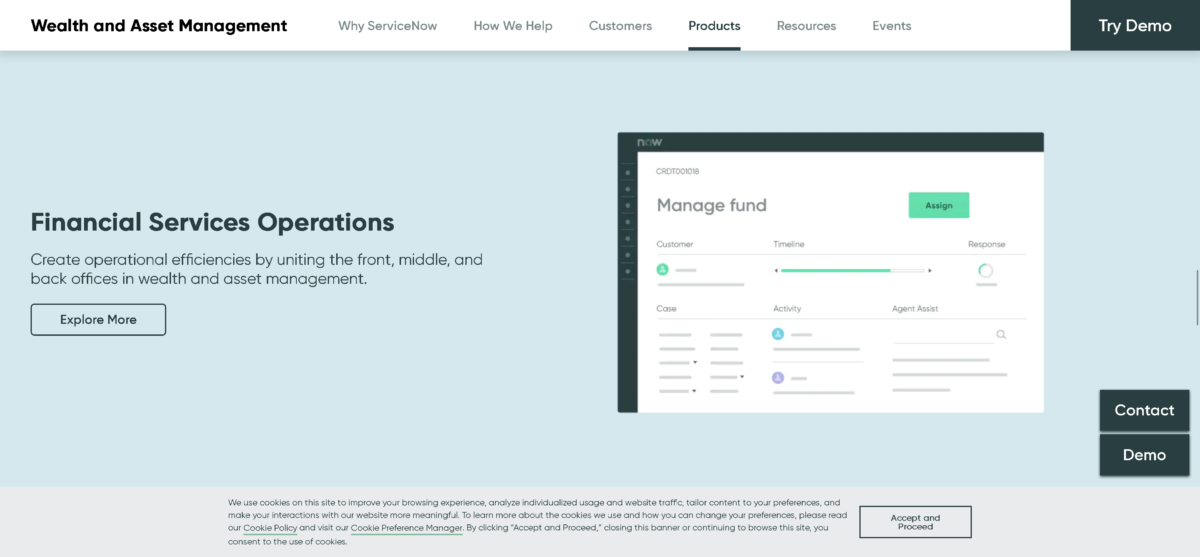Rapid change is the new constant with today’s Enterprises. There is a continuous shift in the technology landscape and the demands of the customers coupled with Enterprises wanting to stay competitive. This changing, fluid environment results in concurrent changes with IT infrastructure. Enterprises today are turning to IT Operations Management to bring order to this complex situation.
Technology is central to the ability of the Enterprise to respond to changes in the market and its customers and to execute its business plans. Today’s IT leaders are responsible for more than overseeing technology breakthroughs but are also integral to advising chief executives about the organization’s business strategy. Similarly, this has also meant that traditionally non-IT departments are also getting more involved in decisions that were earlier the purview of IT – for e.g. Choices regarding edge devices, cloud services and even security policies and plans. It’s clear that several factors are at work in making the IT infrastructure ever more complex and un-manageable. The Infrastructure has to ramp up and scale back as demand fluctuates. Enterprises are themselves becoming more complex and the IT infrastructure has to evolve to keep pace. Significant technology shifts also necessitate small as well as large-scale changes in the IT infrastructure of the enterprise on a regular basis.

The role of the IT department and the IT infrastructure of the Enterprise is to:
In achieving these goals, the IT infrastructure has to face several complex challenges, some internal to the Enterprise and others within the ecosystem the Enterprise operates in.
Budgets: Budgets are under pressure. The challenge for the IT department is to deliver more with the same amount of investment – essentially utilize the available budgets more efficiently.
Multi-locational / Distributed workforce: Enterprises are located across multiple geographies and teams are more spread out. To add to this, trends like telecommuting and remote teams are adding complexity. A Forrester Report had predicted that by 2016, 43% of the US workforce, 63 Million people, would be telecommuting. Further complexity is introduced by the growing number of freelancers or temporary workers, estimated at 60 million people by 2020 in an Intuit study. The IT infrastructure has to cater to the connectivity needs of the distributed workforce and also support them remotely.
BYOD: A Gartner report, “Bring your own device: The facts and the future”, projected that by 2017, 50% of employers would require that employees get their own devices for work. Juniper Research estimates that by 2018 over 1 Billion devices would be used in BYOD mode. The emergence of tablets has further complicated the scenario by blurring the lines between traditional definitions of compute and mobile devices. A multiplicity of devices means added complexity in terms of integration needs, software compatibility, license issues and non-standard infrastructure elements.
Technology Shifts: There are several technology-driven trends that are impacting Enterprise IT – Cloud computing is no longer just a trend but has become a core part of the Enterprise IT strategy. The way Enterprises leverage the Cloud is evolving from the Public Cloud to the Private Cloud and to a more Hybrid version today. The need to leverage Big Data and Analytics is making greater demands on the data storage and network infrastructure of the Enterprise. A greater reliance on Apps and sensors on data gathering and reporting mean the IT infrastructure has to be more mobile friendly. These technologies develop rapidly and present a moving target for the IT department to assess and address with speed and efficiency.
Security: In June 2015 UK’s Department of Business, Innovation and Skills, reported in its “Information Security Breaches Survey” that 90% of large organizations and as many as 74% of small organizations had suffered a data breach in 2014. The IT Infrastructure has to evolve to ensure the security and integrity of the data, both at rest and while in motion over the network.
Compliance: Compliance has become more onerous for Enterprises. The regulatory landscape is complex and dynamic and the degree of difficulty is even higher for Enterprises located across geographies. Enterprises need to hold themselves to very high standards of governance and these further increases the compliance burden as internal reporting and policy mechanisms get tightened. The need to give the Board transparent, real-time visibility into the operations of the whole Enterprise imposes a greater burden on all the IT systems. Data collection, filtering, analysis, reporting and dashboard creation becomes a core need and hence a significant challenge for the IT infrastructure.
IT departments in the Enterprise are faced with a double challenge – a more central and strategic role with a greater hand in the success as well as the failure of the Enterprise combined with a greater complexity in the IT operations. In this situation, they are turning to IT Operations Management to bring some order to this chaos. ITOM’s focus is on managing the overall IT infrastructure that forms the backbone for service delivery. In the context of the typical Enterprise today, this may include the networking infrastructure, the wide area and edge device connectivity, the data storage infrastructure, the applications and even the IT services delivered to the Enterprise. Enterprises are turning to ITOM software solutions to leverage their IT investments more efficiently and to address ongoing changes more easily. ITOM software can help to automate the processes associated with infrastructure provisioning, capacity utilization, performance management and ongoing maintenance of all the elements of the IT infrastructure.
Enterprises are looking to implement ITOM to gain greater visibility and control over the various elements of their IT infrastructure. The objective is simplification for easier and more responsive management that enhances the Enterprise’s ability to deliver according to the plan. ITOM helps Enterprises to utilize their IT infrastructure more efficiently, to be more agile in response to external and internal needs and to improve the overall service and support delivery.
Automate More: Automation is a key benefit delivered by ITOM. The various elements of the overall IT infrastructure that can be automated include the IT Service Management by the optimization of the service desk, the management of the data center including virtualized elements and the management of the network backbone. Automating these processes makes response faster, more effective and more efficient.
Monitor Better: ITOM allows the Enterprise to gather data from several data sources representing all the key elements of the IT infrastructure. This data can be analyzed and can then provide insights to the IT Operations on factors like loads, performance and user activities. This makes it easier to identify issues earlier, diagnose them and to then address them faster. ITOM also provides transparent visibility into the actual behavior of users and the issues that they face.
Manage Effectively: ITOM enables more efficient and effective management of the IT infrastructure by allowing a common management platform for the various different applications across the Enterprise. ITOM communicates with these applications at the API level and facilitates a degree of communication that allows faster decision making. ITOM also supports easier provisioning of resources like application licenses and cloud services based on analysis of the workloads.
Proactively Anticipate: The business and technology landscape changes very rapidly and the Enterprise has to be extremely agile to respond to such changes. Enterprises are leveraging ITOM to proactively anticipate the changes that may be needed to the IT infrastructure to address a business situation that is liable to change and to then use that insight to be ready when the anticipated change does occur.
The benefits to the Enterprises from ITOM are more transparent visibility, efficient utilization of the IT investment, more responsive provisioning of IT resources, easier issue isolation and better maintenance.
Rapid technology change and an extremely demanding customer landscape is putting the IT infrastructure of Enterprises under extreme pressure. As IT becomes more central to the achievement of the business plans for the enterprise it becomes critically important for them to keep track of every infrastructure element at all times. In such an environment, to avoid potentially catastrophic disruptions in services and to ensure that the IT infrastructure is managed efficiently and effectively enterprises are finding an answer in IT Operations Management.
By Sheetal Kale





